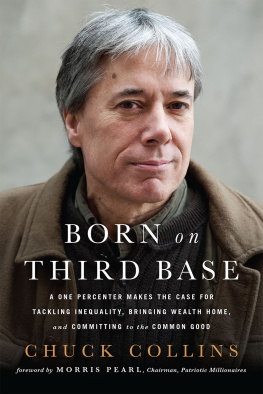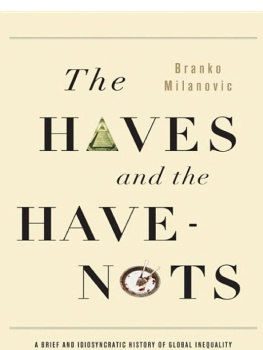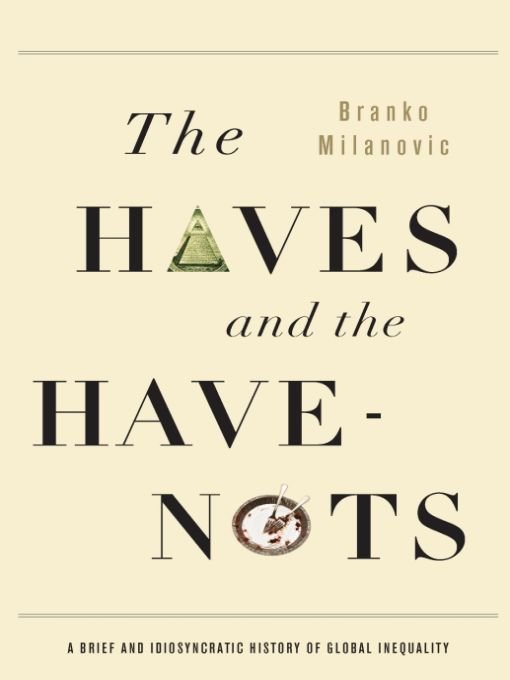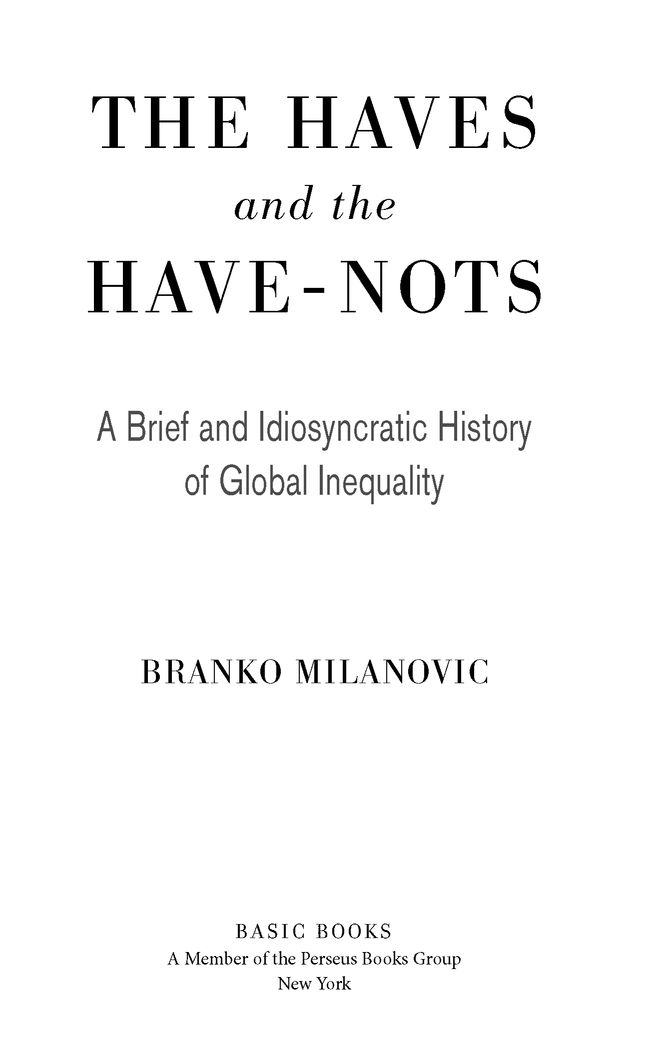Table of Contents
Praise for The Haves and the Have-Nots
Where do you rank in the all-time world distribution of income? How about Jane Austens Mr. Darcy? Or Anna Karenina? Was Octavian Augustus richer than Bill Gates? Why might China fall apart, like the USSR and Yugoslavia? Why should we care about differences in income and wealth? In this book of many delights, Branko Milanovic, who has spent twenty-five years studying global inequality, provides us with a veritable Arabian Nights of stories about inequality, drawing from history, literature, and everywhere in the world. A pleasure to read, and an eye-opener for haves and for have-nots alike.
ANGUS DEATON,
Professor of Economics and International Affairs,
Princeton University, 2009 President of the American
Economic Association, author ofThe Analysis of Household
Surveys: A Microeconometric Approach to Development Policy
Learn about the serious subject of economic inequality while you have plenty of fun traveling around the globe and far back in time! Through fascinating stories and wonderful illustrations, Branko Milanovic explains income and wealth inequalitytheir concepts, measurement, evolution, and role in human lifewithout compromising precision or balance. This is a delightful book, as commendable for vacations as for the classroom.
THOMAS POGGE,
Professor of Philosophy and International Affairs,
Yale University, author ofWorld Poverty and Human Rights:
Cosmopolitan Responsibilities and Reforms
For N. and G.
To determine the laws which regulate this distribution [into wages, profits and rent], is the principal problem in Political Economy.
David Ricardo,Principles of
Political Economy(1817)
Of the tendencies that are harmful to sound economics, the most seductive, and ... the most poisonous, is to focus on questions of distribution.
Robert E. Lucas, The Industrial Revolution:
Past and Future (2004)
Preface
This book is about income and wealth inequality in history and today. Inequality appeared as soon as human society was born, because distinctions of power and wealth accompany all human societies. Inequality is by definition social, since it is a relational phenomenon (I can be unequal only if there is somebody else). Inequality can thus exist only when there is a society. A Robinson Crusoe cannot have a concept of equality, but Robinson Crusoe and his Man Friday do. Moreover, inequality makes even more sense when society is not a mechanical accumulation of individuals but a group of people who share certain characteristics such as common government, language, religion, or historical memories.
The objective of the stories around which this book is organized is to show, in an unusual and entertaining way, how inequality of income and wealth is present in many facets of our daily lives, in the stories we read or the discussions we have around our kitchen tables or in our schools or offices, and how inequality appears when we look at certain well-known phenomena from a different angle. The objective is to unveil the importance that differences in income and wealth, affluence and poverty, play in our ordinary lives as well as the importance that they have had historically.
The book is organized around three types of inequalities. In the first part, I deal with inequality among individuals within a single communitytypically, a nation. This is the type of inequality that most of us will easily recognize because it is the type of inequality that we are likely to think of first when we hear the word inequality. In the second part, I deal with inequality in income among countries or nationswhich is also intuitively close to most of us because it is the sort of thing we notice when we travel, or when we watch the international news. In some countries most people appear poor to us, while in others most people seem very affluent. These between-country inequalities find their expression also in migration when workers from poor countries move to the rich world in order to earn more and enjoy a higher standard of living. In the third part, I move to the topic whose relevance and importance are of much more recent vintage: global inequality, or inequality among all citizens of the world. This inequality is the sum of the previous two inequalities: that of individuals within nations and that among nations. But it is a new topic because only with globalization have we become used to contrasting and comparing our own fortunes with the fortunes of individual people around the globe. Yet it is probably a type of inequality whose importance will, as the process of globalization unfolds, increase the most.
Ive illustrated each type of inequality with short stories (vignettes), some of which take us all the way back to Roman times, while others could be almost taken from the daily newspapersBarack Obamas family, the global middle class, or Maghrebi migrants to Europe. Each of the vignettes can be read separately, and they do not need to be read in order. In some cases, however, the vignettes are linked by their topic, and reading them in succession might be more appealing. Yet they are all stand-alone pieces.
Each part is introduced by an essay on what economists have to say about that particular type of inequality. The essays, while written to be accessible to all interested readers, are probably a little bit more demanding in terms of attention than the vignettes. They are supposed to provide the reader with a better technical grasp of the issues that are discussed in the vignettes. For those readers who may be perhaps keen to pursue the issues in the book further, the essays offer an introduction to the literature. At the end of the book, in Further Readings, I also include a list of selected publications, arranged by essay and vignette, that readers may consult if they would like to know more. The books and articles listed are my own choices of what I consider the most interesting and relevant publications for a given topic.
On a personal note, this book was not only a pleasure to write but also a very easy undertaking. After working for more than a quarter of a century on the issue of inequality, I have amassed a huge amount of data, information, and interesting stories, and have it literally at my fingertips. I thought that they would be fun to share with the readers. When I sat down to write the book, I did not have to think much about what to include or how to shape it. It was just a question of writing down all the things on which I had thought quite a lot already, and for quite some time, and for which I had ready-made data. Perhaps most important from a personal perspective, this book has given me the opportunity to combine my two passions: a passion for numbers and distributions and a passion for history.
I had three objectives, and, of course, like every author, I do not know if I was able to achieve any of them. First, I would like for the reader to pass some pleasant time reading the stories and hope that he or she will be able to combine the pleasure of easy reading with the learning of new facts or of a fresh way of looking at things. Second, I thought it important to bring to the attention of the public the issues of inequality in wealth and income that, for many reasons (some objective and some perhaps dictated by the interests of the rich), have tended to be swept under the carpet so that they do not disturb the public too much. Third, bringing the issues of wealth and poverty to the center of a social debate, particularly at a time of crisis, should stimulate some old-fashioned social activism. In other words, people have the right to start asking questions about the justification of certain incomes and the huge gaps that exist between the rich and poor in most countries, including the United States, and between the rich and poor countries in the world. These are the issues that some dominant segments of public opinion makers have tended to discard, all too easily, I believe, by arguing that all or almost all inequalities are market determined and as such should not be the object of discussion. But neither are many of them market determined, but rather determined by relative political power (as the examplesall too numerousof the global financial crisis show), nor can the questioning be taken out of the social arena by evoking the market. The market economy is a social construct, created, or rather discovered, to serve people, and thus raising questions about the way it functions is fully legitimate in every democratic society.








